
Every summer the grass pollen returns. Symptoms of hay fever include: sneezing or coughing, runny or blocked nose, itchy or watery eyes, itchy throat and nose, and even headaches. June is the traditional grass pollen season which extends into July. The first two weeks of June are often the worst for sufferers coinciding with unlucky school pupils doing exams. This early June peak can be followed by a second peak in the first two weeks of July with these two months being the worst times for those afflicted by grass pollen.
“Hay fever is a common allergy that causes sneezing, coughing and itchy eyes. You cannot cure it, but there are things you can do to help your symptoms or medicines you can take to help.” NHS
The pollen season is not just about grass or “hay”, it starts in the UK with tree pollen in late March and can last into September thanks to weed pollen. Ash, Birch and Oak tree pollen peak at different times in spring and the timings and intensity vary from north to south across the UK. Tree pollen typically is only an issue in the day. Weeds such as nettles continue the season as summer ends. There are also many fungal spores throughout the year resulting in more allergic reactions.
Daily pattern of release: Grass pollen levels are highest on warm, dry days. On these days, the pollen is at its worst in the first half of the morning and again from late afternoon and into the evening. University of Worcester
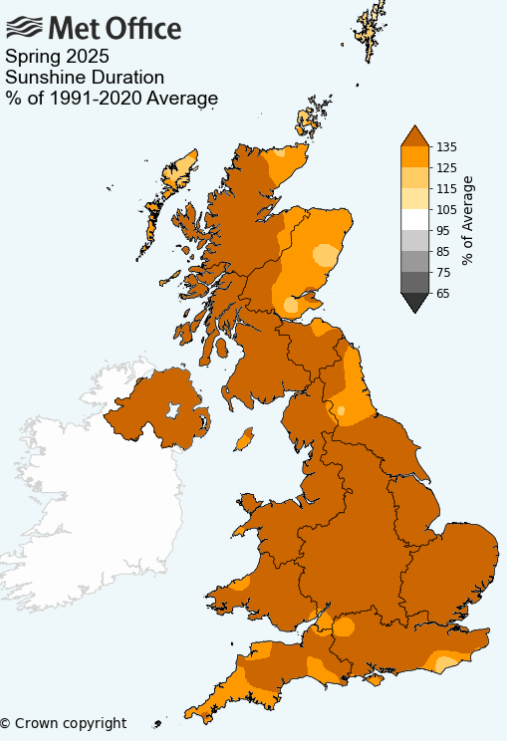
Spring 2025 was very dry, warm and sunny. Farmers managed an early cut of grass but then everything slowed down. Finally, at the start of June, the rains arrived. This wet start to the month has given many crops a welcome boost and as temperatures rise again, the grasses and their pollen proliferate.
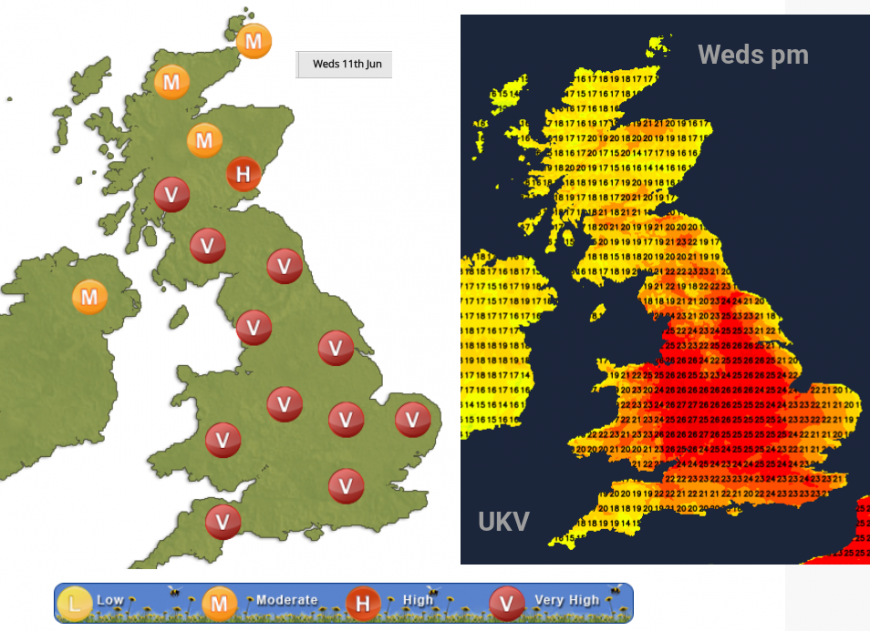
The pollen forecast shows the expected levels over the next five days for a region. Not a specific location. This might be Northern Ireland, SW England, Grampian or the East of England. The pollen count will usually be at its highest when it is warm, humid and breezy. The regional values run from Low, Moderate to High or Very High. Pollen information is also included in the local forecasts.
How does the weather affect pollen amounts?
The weather in the UK affects the production of pollen due to the growth of plants and trees. It also impacts the distribution and dispersion of pollen. Long dry, sunny spells or periods of heavy rain will affect the plants. Rain, wind, temperature and sunshine amounts all affect how much pollen is produced.
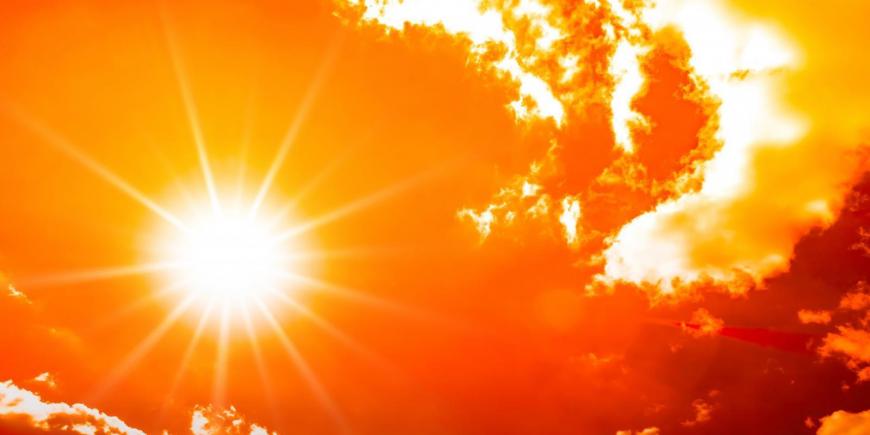
On a dry, warm and sunny summer’s day, there will be a peak of pollen in the first half of the morning and another late afternoon into the evening. Sunlight is crucial for pollen production due to photosynthesis. June sees the longest day and potentially hours of sunlight. If the weather is dull and cloudy the plants will produce less pollen, The same in a dull, cloudy spring for the tree pollen with less sunlight.
Temperatures between 18 and 28C can give a high pollen count if it is dry, not humid and there is a gentle breeze. The wind is key for dispersion. Above 28C it is too hot and pollen levels decrease. Ongoing heatwave conditions can see the pollen supply running out.
The wind helps lift the pollen to your nose and eyes. If the breeze is too light, the pollen stays on the plants or trees. If it is too windy, then the pollen is stirred and mixed, dispersing over a wider area. The winds often ease for summer evenings and the pollen can then settle back to the ground, adding a late burst of symptoms before bedtime.
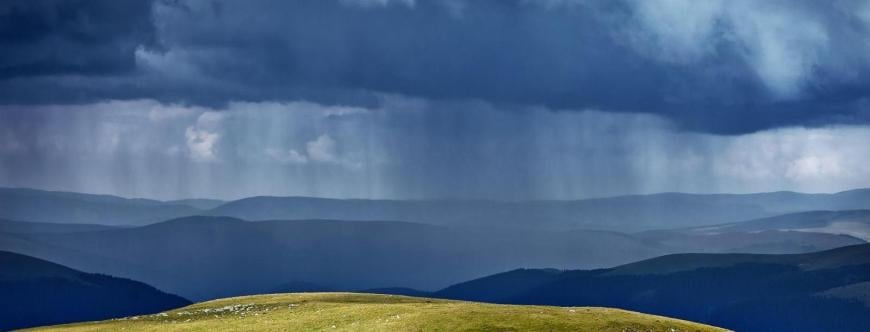
Rain will lower the pollen count, almost washing the pollen from the air. However, the time of day for rain makes a difference. Early, heavy and persistent rain can lower the pollen count all day. Bouts of rain at other times in the day, especially in the afternoon will make less of a difference.
Pollen can be worse away from city centres, due to more grassy areas, trees and planted land. However, when air quality is low in urban areas, this can enhance the impact of grass pollen events. The air pollution can combine with the pollen and make symptoms worse. Conditions in cities in summer can cause worrying air pollution episodes, so it’s worth keeping an eye on the pollen count, and the air quality.
If the heat continues overnight then the grass pollen count can stay at high values, especially for cities in the south of Britain. Fungal spores also increase in mid-June as the weather heats up and can be very problematic for those affected by them into August and September.
Keep an eye on the forecast and start on the anti-histamines early, before the symptoms really flare up.
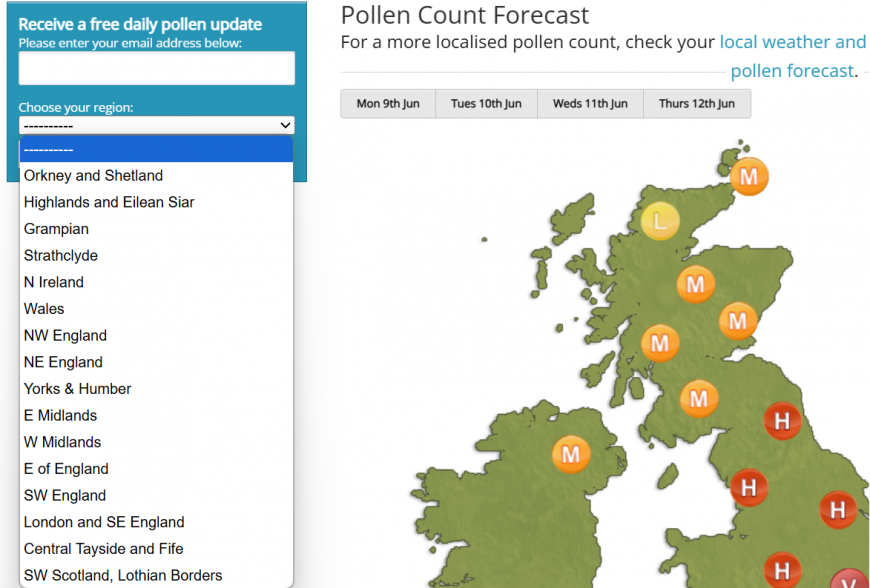
The Netweather pollen count map shows the UK regional values but you can also sign up for an emailed forecast.
More pollen and hayfever discussion in the Netweather community forum
Loading recent activity...